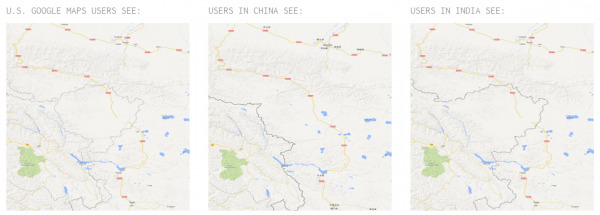The Map Is Not The Territory: Fluid Borders In Google Maps
Not for nothing has Google Maps become one of the most relied-upon navigation services around, but the ways in which Google tailors geographical information to satisfy territorial disputes could prove surprising. Unseen by most – since the details only change when viewed from a different location – the tweaks to border lines can grant vast swathes of land to different countries, something a new Google Maps project has highlighted.
Dubbed "Disputed Territories", the project was part of Knight-Mozilla-MIT's "The Open Internet" Hack Day, and looks to collate all of the different ways Google portrays boundary distinctions depending on who is accessing Google Maps.
For instance, Aksai Chin falls between China and India, and is currently administered by the former but claimed by the latter. Those viewing Google Maps from China therefore see a boundary line that encompasses it, and vice-versa for Indian viewers.

Anybody looking at the area from outside of those two countries, however, sees both lines.
Depending on the complexity of the geo-political situation, some areas of the map can have as many as six different perspectives of the same geography. The Spratly Islands, for instance, have been claimed by Brunei, China, Malaysia, the Philippines, and Taiwan, with users of Google Maps from each location seeing their own versions that satisfy internal politics.
Google's argument is that it does its best to give as much information as possible, while simultaneously observing country-by-country regulations for localized products.
VIA The Loop
SOURCE Quartz; Disputed Territories
